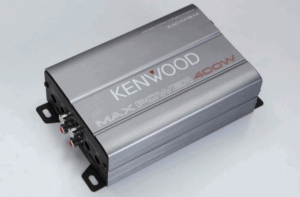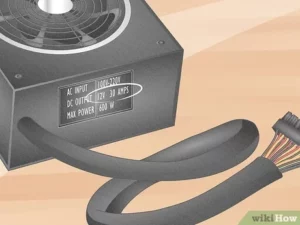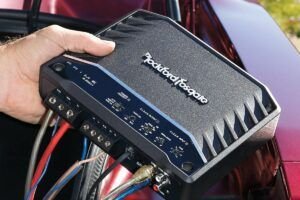Car stereos, including amplifiers, are built-in with vehicles, however, car owners who want better and advanced stereo systems opt for aftermath options which may draw more power. But how many amps does a car amplifier draw? Keep reading to find out.
An amplifier draws between 5-30 amps from a car battery. However, the specific amount of power drawn varies from brand, power requirements, and features. Advanced amplifiers will draw more amps while low functional amps will only draw small amps. It all depends on the sound output from the amplifier. Before you mount an amplifier in your vehicle, check the user manual for the amp requirement. The amp requirements of your entire stereo system also affect the number of amps drawn by your amplifier.
Aftermath Amplifiers deliver better sound quality but they come at a higher price. And they require more power from your car battery. You can deal with this by adding a secondary battery or upgrading your primary battery. Or just opting for an amplifier that wouldn’t drain your car battery.
Table of Contents
Why should I upgrade my amplifier
New vehicles are equipped with amplifiers, however, they are not up to par with modern-day music demands. Car owners want to enjoy loud music without the accompanying distortion and poor sound fidelity. How do they resolve this? By simply upgrading the amplifier. While this may be costly, its benefits are tremendous. But why exactly should you upgrade your amplifier? Keep reading to find out.
- Better Sound Quality
The first reason is fairly obvious. We all want better sound quality, and we’re willing to pay to have that. Upgraded and advanced amplifiers produce cleaner sound output without straining the device and the speakers. This means high fidelity sound even with high volumes. Advanced amplifiers are great for reproducing good low frequencies, which is something most stereo systems don’t consider during installation. So, if you’re looking for better sound quality, then you may want to upgrade your amplifier.
- Power for upgraded speakers
The new and upgraded speakers in the market available for vehicles today require much more power than what’s provided by factory-installed amplifiers and stereo systems. To enjoy the full effect of an upgraded speaker, car owners will have to upgrade their amplifiers too. This change might require more amps from your battery, so it’s imperative to check the amps requirements of your new devices before hooking them to your stereo system. Subwoofers may need more power than the other speakers. You may also have to install a separate amplifier for your speakers.
Amplifier Classes Explained
Amplifiers are differentiated by classes. Manufacturers signify the level of technology and power utilized in producing the amplifier by designating a class to the amp. The classes are class A, class D, and class A/B. They all have distinct performance and power range. When buying an amplifier, you need to pay attention to the class to buy the most appropriate deal.
Class A: You’ll think because it’s designated with the alphabet A, it should be the most efficient. Wrong, class A is the most inefficient of all the classes but it does have its perks and advantages. Class A amps produce good quality sound and are cost-friendly. An average class A amp wouldn’t put a strain on your finances, which is why it’s popular among car owners in the region.
Class A/B: You want high sound fidelity but low power consumption? A Class A/B amp is the right choice. Popular among car owners and reasonably priced to encourage affordability. A class A/B turns off the signal when it reaches zero voltage to save power. A class AB amp also amplifies analog input signals.
Class D: Amps in these class are referred to as digital amps. They switch power circuitry rapidly to curtail waste and heat. They use the most recent technologies in the stereo industry, making them popular with audiophiles.
How to upgrade your amplifier
Do you want to add some oomph to your factory car stereo system but don’t know how to? Then you’ve arrived at the right place. We have researched several ways to help you upgrade your amplifier. These include:
- Factory system upgrade
The best way to upgrade your amplifier is by sticking to a factory system upgrade, which is specifically designed to fit your vehicle’s requirements. This eliminates the need of calculating the amps requirement as it’ll fit directly into your car battery’s output. You can find a factory system upgrade by visiting your car manufacturer or a trusted stereo dealer. These custom factory upgrades improve the quality of sound and offer better durability.
Tips For Upgrading Your Amplifier
-
Make Sure You’re Getting A Good Deal
The alluring features of an amplifier can easily blind you from the most important stuff, watt amperage. You need to consider the amount of amp that flows in and out of the device. Check the fuse with a simple physics equation. Power = Voltage X Current Draw X Efficiency Constant. The result should be between 23.5 volts.
The current draw should be the total fuse rating of the amplifier with the efficiency constant being .6 for class AB PD and .8 for class D amplifiers. Manufacturers who want to sell fast are likely to advertise the wrong data on their products. This may cause poor sound output and also endanger your car battery and the other stereo devices.
2. Check The Warranty Of The Amplifier
A good warranty saves you a couple of dollars, and might even protect you from spending hundreds of dollars on a replacement. This is why you should focus as much energy on getting a good amp as getting a good warranty on the amplifier.
Once damaged and still within the period of warranty, the manufacturer is mandated to cover the cost of repairs. If the warranty covers a replacement, then you’ll properly get a new amplifier too. However, warranty is a tricky part of the business.
To protect the manufacturer, terms and conditions are established for the consumer to abide by. For example, the warranty becomes void once the product is tampered with by an unlicensed dealer or professional. Another important factor to note is that a manufacturer only honors a warranty if the product was purchased from a licensed store.
3. Size Of The Amplifier
The physical size of the amplifier matters if you’re mounting it inside your vehicle. This is because a car has limited space, therefore, any device that goes into the vehicle has to fit properly into the available space in the vehicle.
When you look at a vehicle, there are only several places to mount an amplifier: car trunk and car seat (under). If the amplifier doesn’t fit in these areas, then you’ll have to consider another option. Size doesn’t affect performance. A small amp is just as good as a big one.
The average car amp measures around 6.73″ X 11.18″ X 1.83″ but delivers above 150 watts into each channel. This size of the amplifier can easily fit under your car seat or take a small space in your car trunk.
4. Wiring
The quality and size of your wiring matter a lot when it comes to amp wiring. The popular wiring types are Oxygen-Free Copper (OFC) and Copper Clad Aluminum (CCA). OFC wires are best for amp wiring but are costlier than CCA wires which are fewer conductors. When it comes to wire gauge, you want to look out for 4 gauge kits.
5. Compatible Power
The amplifier must be powerful enough to power all the stereo devices in your vehicle. Check the amplifier has crossovers that are also compatible with the applications.
Conclusively, a car amplifier will need between 5-30 amps. Advanced amps, however, may require more. For example, a typical new amp draws at least 10 amps. You need to always check the amp requirement before connecting a new amp to your stereo system.




